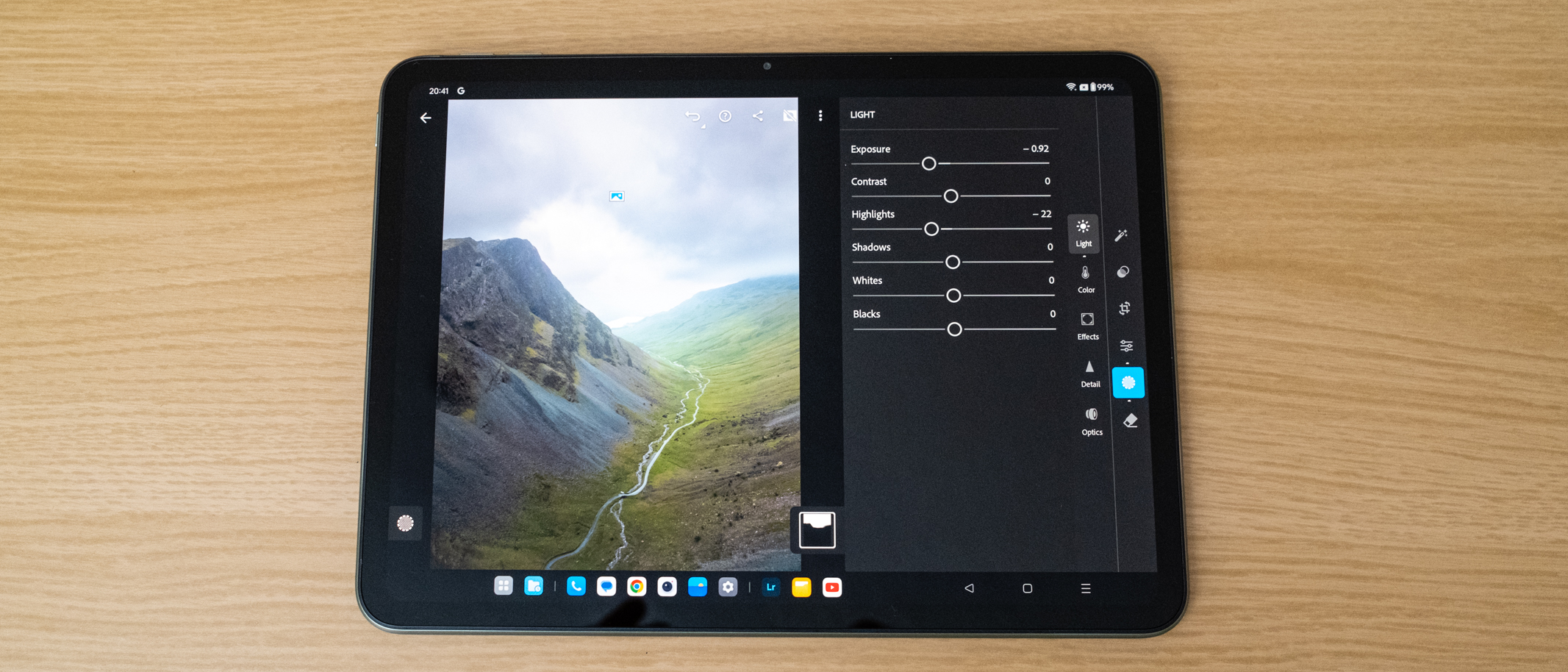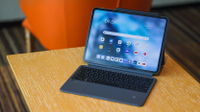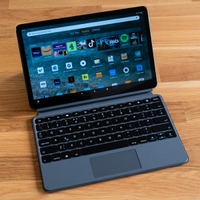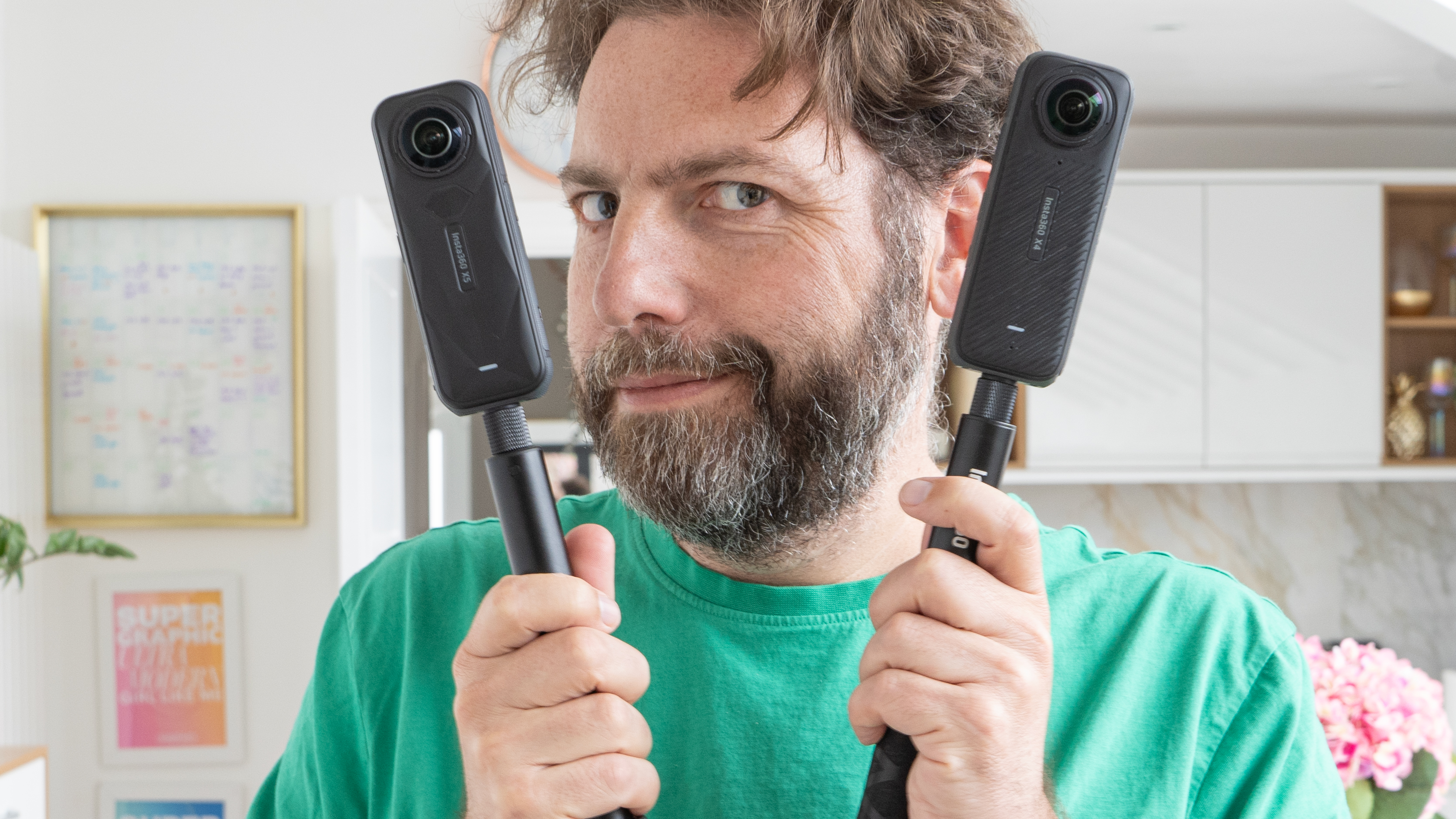Digital Camera World Verdict
All in all, I found the OnePlus Pad Go to be a useful and, indeed, more than adequate device for general use with no major slowdowns or stuttering during testing. Even working with 12MP Raw files in Adobe Lightroom Mobile worked well. Despite not having a 4K OLED screen, the on-screen image is sharp and vivid, and for the price it’s fair to say that the Pad Go represents good value for money, especially considering it's an 11-inch LTE tablet.
Pros
- +
Sleek design
- +
Decent performance
- +
Competitively priced
Cons
- -
No OLED screen
- -
Sound is good but not great
- -
Only one colour is available
Why you can trust Digital Camera World
OnePlus is known for delivering high-performance phones and tablets that are, well, extremely competitively priced, but in the main offer comparable performance to more expensive rivals. The OnePlus Pad Go falls within this profile perfectly to offer an 11-inch 2.4K tablet with LTE so you can install a SIM card for connectivity on the go alongside using WiFi when available.
This is a consumer tablet so it's not superpowered for productivity, although it can handle some more demanding tasks reasonably well, which we'll discuss later. But for everyday tasks such as web browsing, on-demand video, gaming, and general app use. Quite simply, for the average user, it's more than adequate and handles most apps with ease.
The Pad Go is a sleek and well-made tablet that looks and feels more expensive than it is. The main downside in terms of design is that it's only available in Twin Mint with no other color options. It's not the end of the world and when placed in a case it's unlikely you'd ever see the color of the sides and rear anyway, but it is a shame that it's not available in more neutral colors.
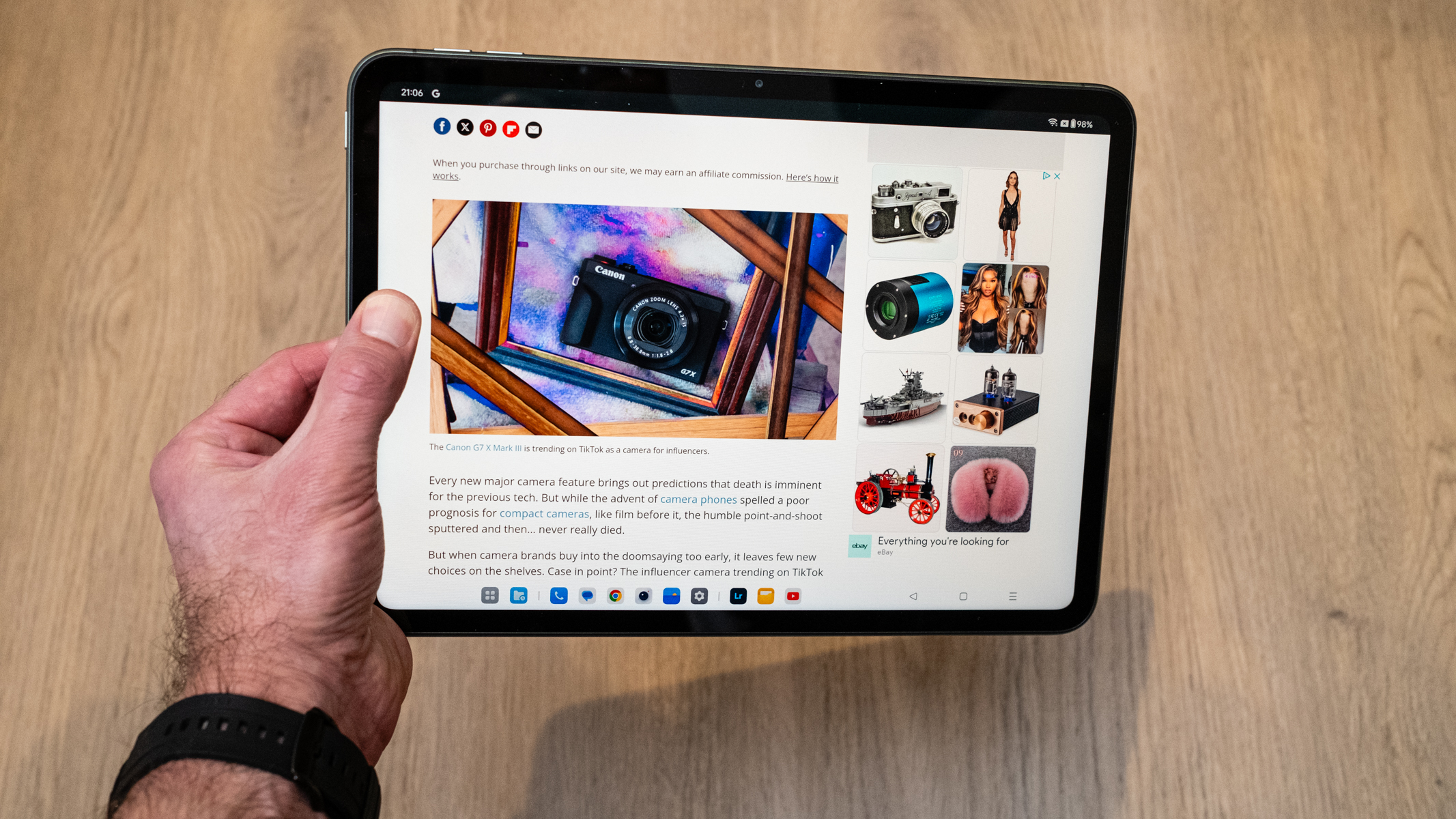
OnePlus Pad Go: Specifications
| Display | 2.4K / 2408x1720px / 260ppi |
| Processor | MediaTek Helio G99 64-bit Octa-core |
| RAM | 8GB LPDDR4X |
| Battery life | Up to 514 hours standby |
| Front camera | 8MP 1080p 30fps |
| Rear camera | 8MP 1080p 30fps |
| Dimensions | 10.04x7.40x2.72in / 255x188x69mm |
| Weight | 18.06oz / 512g |
OnePlus Pad Go: Price
The OnePlus Pad Go Android Tablet 8 GB RAM 128 GB Storage LTE is available in the UK for an attractive price of £219. A case is essential for general protection and protection of the rear camera, and there's a OnePlus Folio Case in green available to match the tablet alongside third-party options. For an 11-inch LTE tablet with more than adequate performance, this is undoubtedly a great price.
OnePlus Pad Go: Design & Handling
The OnePlus Pad Go looks and feels like a quality device that belies its competitive price and can respectably compete with many more expensive rivals. Although, of course, not all, that's far from the end of the world given the price difference.
It features a svelte design that's 10.04x7.40x2.72in / 255x188x69mm with a fairly narrow bezel around the screen so you're not looking at acres of black when using the tablet. At 18.06oz / 512g it's marginally heavier than some rivals but remains comfortable to hold. The screen and rear are fingerprint magnets, so a case and screen protector will help to alleviate this while also adding protection.
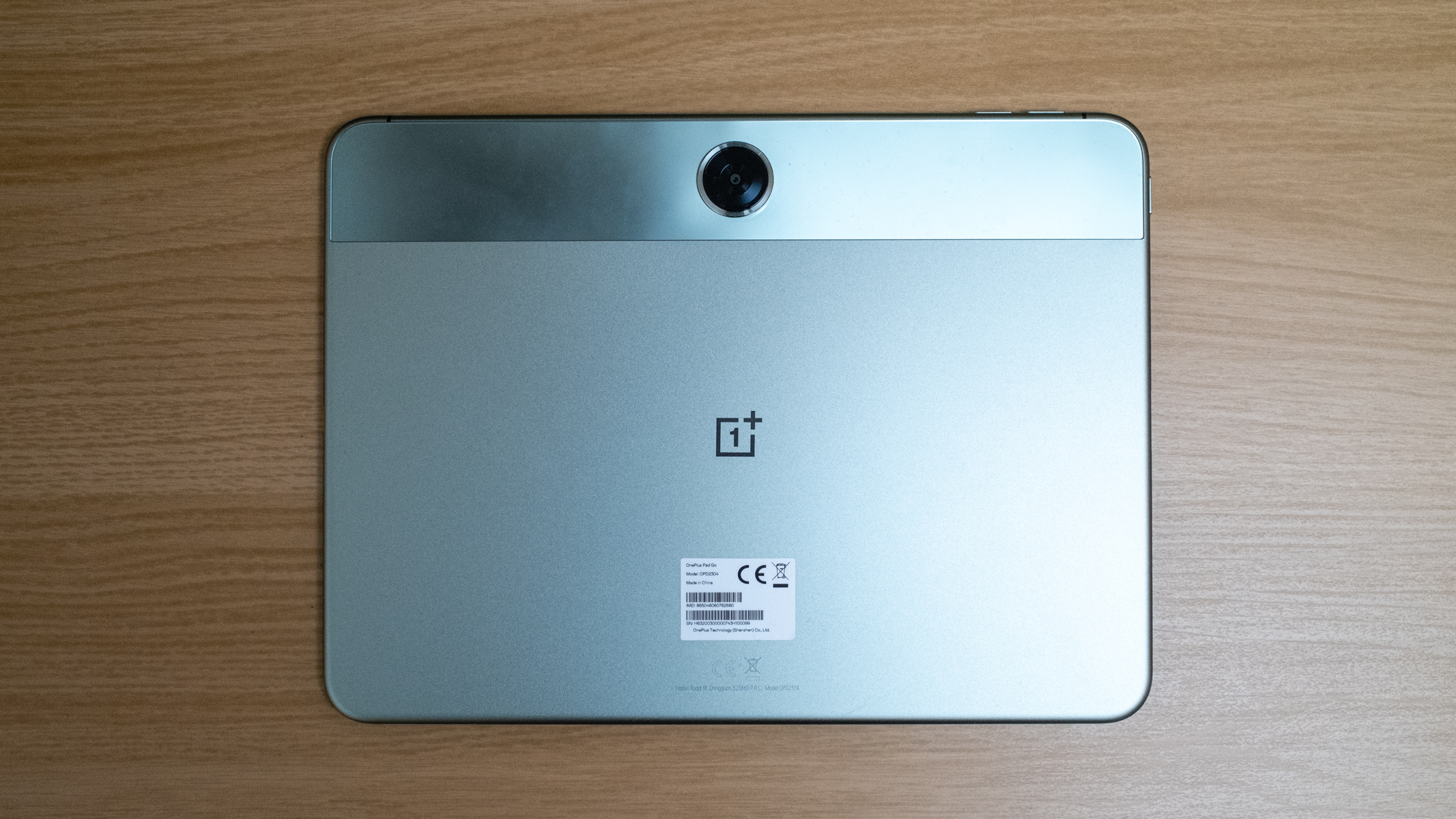
The 11.35-inch / 28.85cm screen provides a comfortable viewing area with a 2.4K (2408x1720px) 260ppi resolution. It's certainly not aimed at gaming, but it can handle games well thanks to the 90Hz refresh rate, processor, and RAM. The image produced is bright and clear with the ability to display 96% NTSC with a 1500:1 contrast ratio and a 400nit maximum brightness.
A 4K OLED screen would be amazing, but that's not something we'll be seeing at this price point for some time. The Eye Care feature, which intelligently reduces brightness and reduces blue light at night is, however, a welcome feature that, like with smartphones, does make later use/viewing more comfortable.
I found the Pad Go great for watching on-demand movies and YouTube in bed, in the bath, and on the sofa, but what I did find was that darker videos were often difficult to view even under house lighting. This certainly isn’t a deal breaker, but it's something to be aware of if watching movies is a key reason for purchasing a tablet.
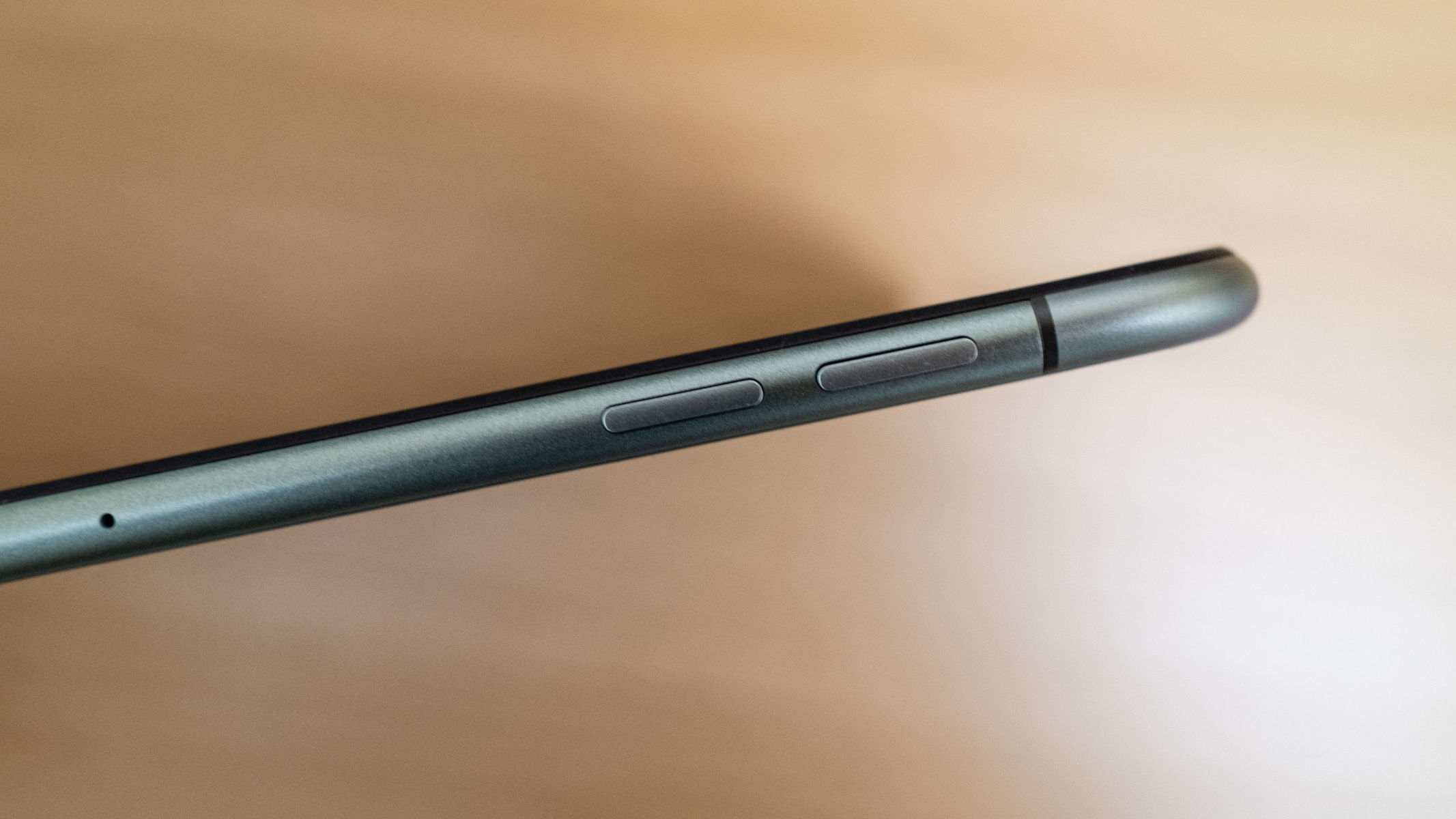

In terms of usage and productivity, there's no official OnePlus keyboard available for the Pad Go, so it's very much an on-screen typing affair. This is fine for writing the odd email, web searches, and messaging, but screen typing is never ideal for long periods so this isn’t a tablet that could become a laptop replacement.
That said, putting processing power to the test, I installed Adobe Lightroom Mobile and copied some Raw files to the Pad Go by plugging a portable SSD into the USB-C port. These were 12MP Raw files shot with a DJI Mini 3 Pro drone, so not the largest Raw files by a long shot.
The Pad Go handled these with ease and I was able comfortably to process images using the Lightroom Mobile touch interface. One point to note here is that the Pad Go hasn’t had multiple apps installed and uninstalled alongside other data, so you could say it's fairly 'clean' at this point. How it would perform a year down the line after extended use is anyone's guess.
Alongside, gaming and Lightroom, I also took myself into the YouTube app and quickly scrolled through YouTube Shorts to look for any delays. And I'm happy to say that scrolling was always smooth with no lagging, which can be an issue with cheaper tablets with lower-end processors and less RAM. It's far from a benchmarking test, but it's one that my teenage son believes is incredibly important.
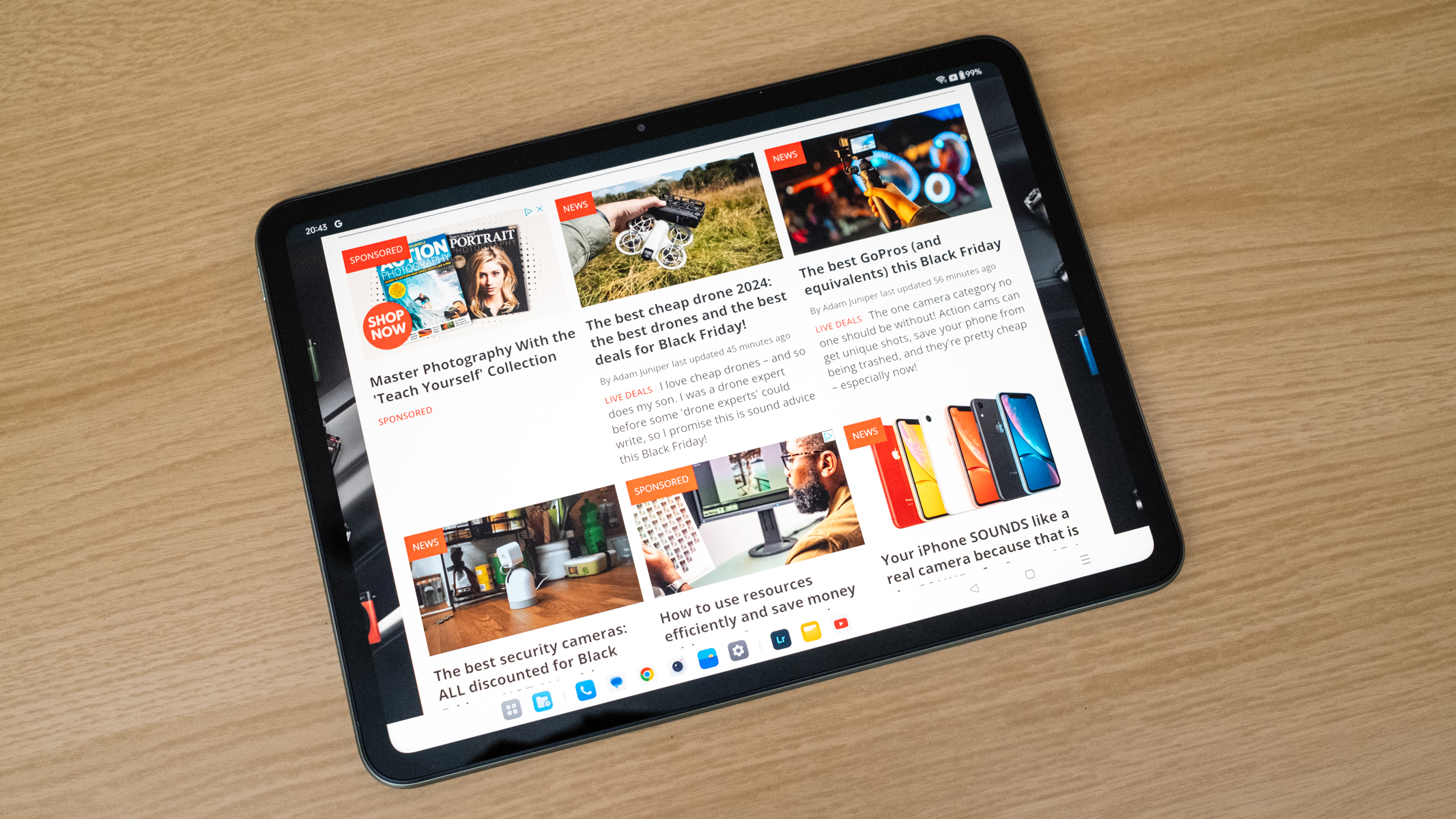
OnePlus Pad Go: Performance
Like most tablets, setting up the Pad Go couldn’t be simpler and, as always, you’re guided through the process so it doesn’t take too long to set up the device. Once set up, you'll be inundated with updates so expect a little longer to get up and running fully, but these naturally improve performance and stability, so it's well worth doing this straight away.
With the MediaTek Helio G99 64-bit Octacore processor and 8GB LPDDR4X RAM, the operation is smooth overall and, as previously mentioned, provides more than adequate performance. The Pad Go runs on OxygenOS 13.2 which is skinned over Android 13 and provides an intuitive interface that makes navigating apps and settings pleasantly simple. There's also a split screen mode which allows you to view two apps at once, which works well if you'd like to view a couple at once.
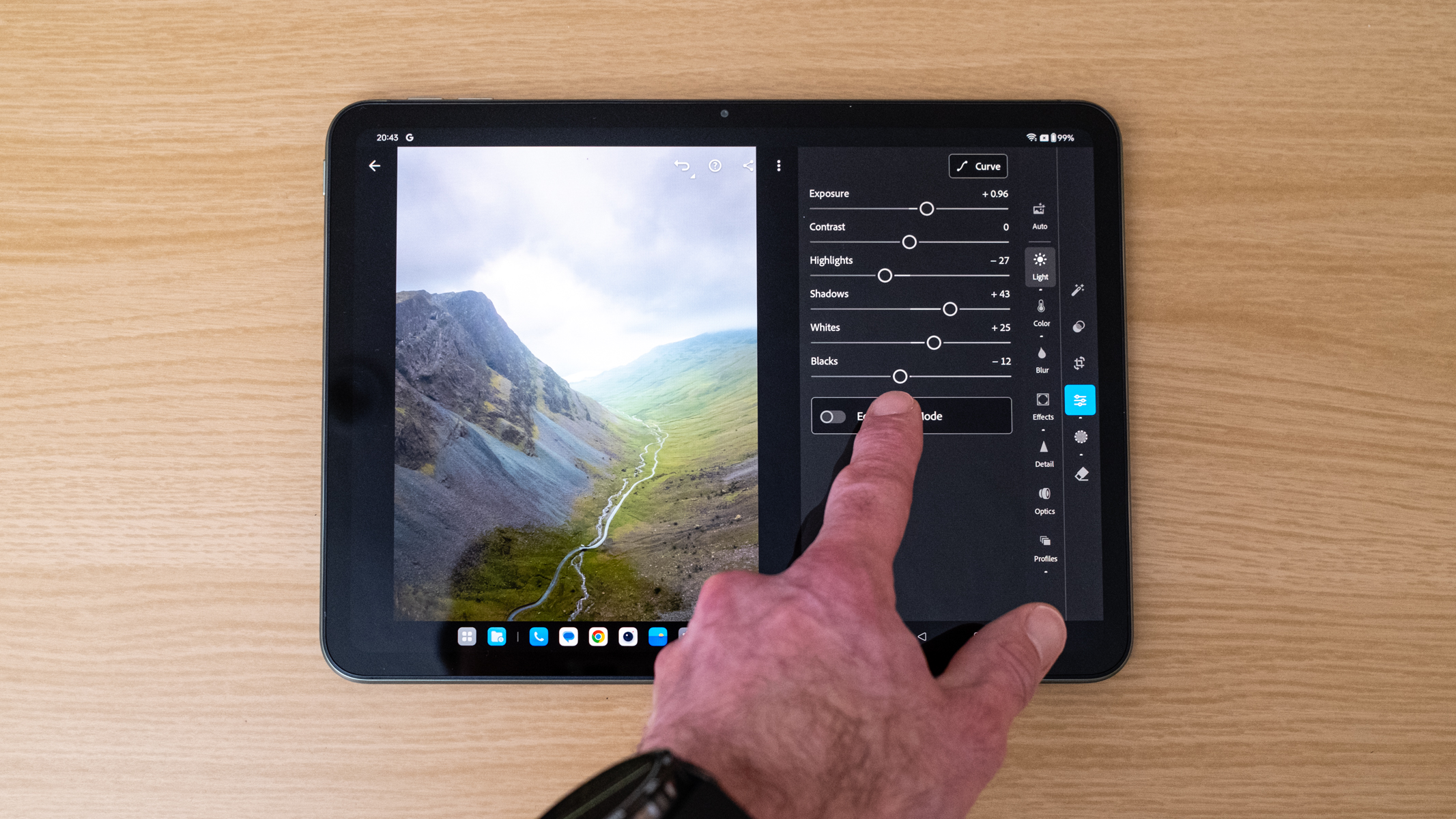
Access to the tablet is secured by PIN, password, or pattern alongside face scan, but there's unfortunately no fingerprint scanner. This would be a useful touch, but at the price of the device, it's a small concession to make. On the plus side, the face scan works well and even recognizes me when wearing glasses, even though it was set up without, but it still doesn’t open for other people using face scan.
Both the front and the rear cameras are 8MP and can capture video in 1080p and 720p at 30fps. The rear camera also features Electronic (EIS). Despite this, image quality from the rear camera is far superior to the front with greater clarity, detail, and saturation. For video calls, however, the front-facing camera is fine, but not outstanding. The EIS is noticeable and is better for static video capture since when walking and recording some jello was visible on the screen.


Sound is in some ways similar. The Pad Go features Dolby Atmos Quad Speakers which do indeed produce pleasing sound. Sound is clear when watching movies and listening to music, but although it's certainly not 'tinny', it lacks the bass and warmth that would help to create a richer and ultimately more enjoyable sound.
Finally, we couldn’t finish without looking at battery life. Battery life isn’t advertised beyond the battery capacity of 8000mAh with 33W SUPERVOOC charging and up to 514 hours battery life on standby. In reality, the tablet charges reasonably quickly, and with between 30 minutes and three hours each day depending on what I was doing, it typically lasted six between charges. This was with the tablet switched on but in standby mode between uses, so fairly typical usage patterns.
OnePlus Pad Go: Verdict
All in all, I found the OnePlus Pad Go to be a useful and, indeed, more than adequate device for general use with no major slowdowns or stuttering during testing. Even working with 12MP Raw files in Adobe Lightroom Mobile worked well, although, with the 96% NTSC color gamut of the screen, I certainly wouldn’t want to focus on more color-critical work. But for basic Raw processing in front of the TV for social media, The Pad Go was perfectly adequate.
Despite not having a 4K LOED screen, the on-screen image is sharp and vivid, although as previously mentioned it doesn’t handle darker scenes in movies particularly well in more brightly lit conditions. This isn’t, however, a dealbreaker, and for the price it’s fair to say that the Pad Go represents good value for money, especially considering it's an 11-inch LTE tablet.
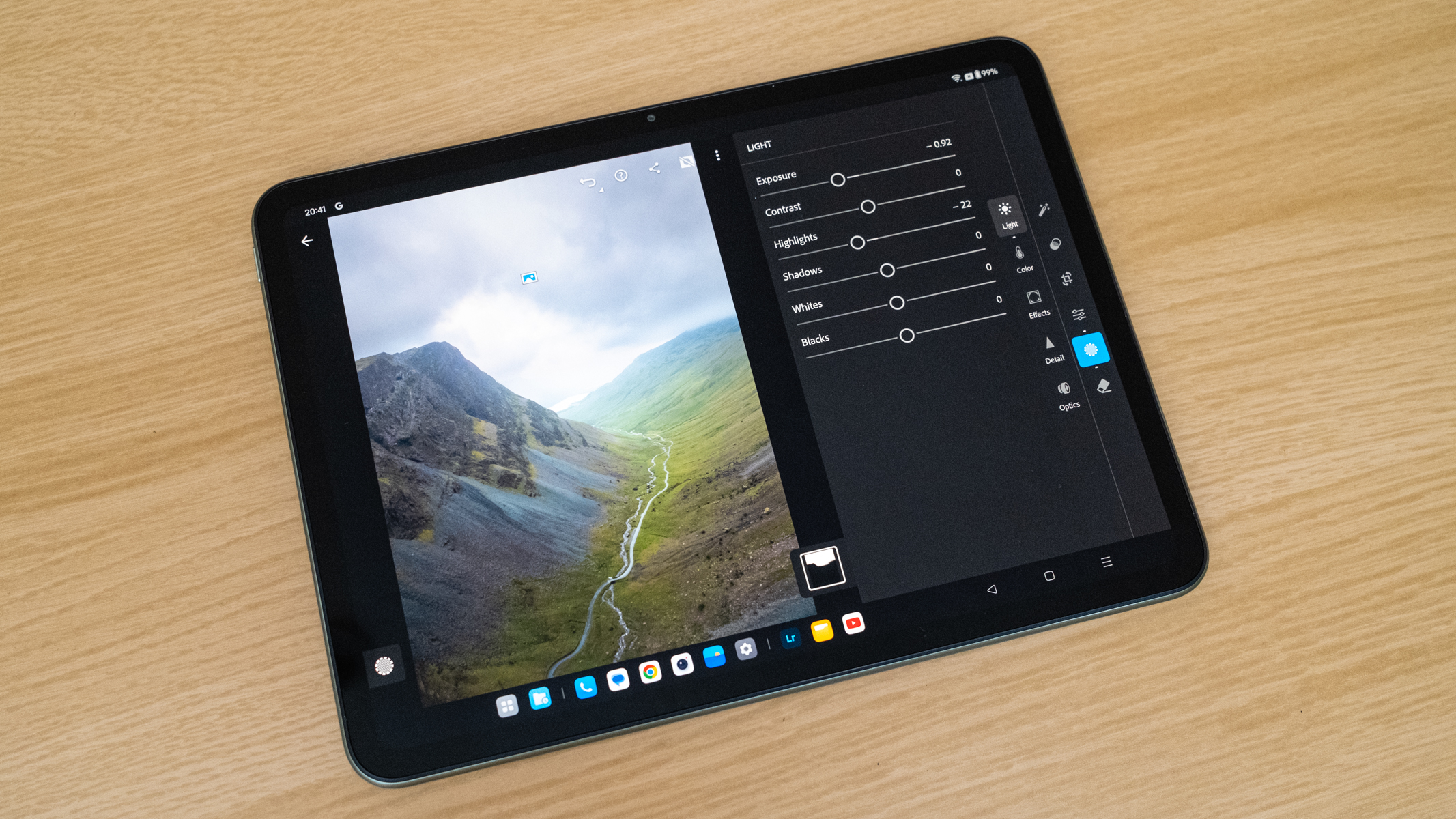
Alternatives
OnePlus Pad: The OnePlus Pad is aimed at creative users and is much better geared towards productivity than the Pad Go, so it's a tablet to consider if you're looking for a more work-oriented tablet. Read the full review...
Amazon Fire Max 11: The Amazon Fire Max 11 is a slick device and Amazon's best tablet by far to date. Performance is great, but it is limited due to no Google Play Store and heavy push on Amazon services. Read the full review...
James Abbott is a landscape and portrait photographer based in Cambridge. He’s also an experienced photography journalist specializing in camera skills and Photoshop techniques. He is also a CAA-approved drone pilot and professional aerial photographer.
